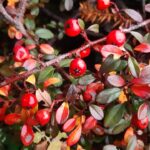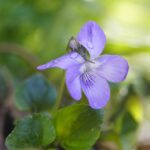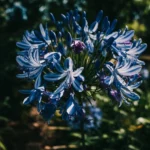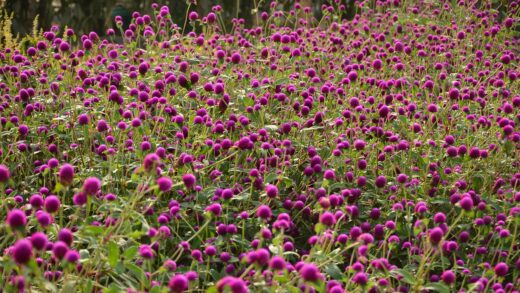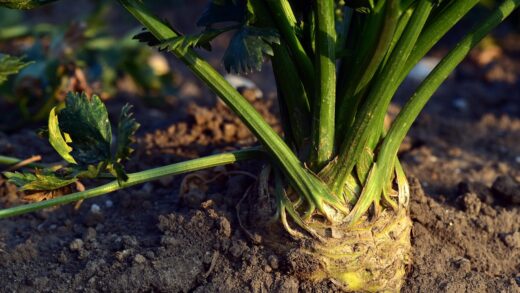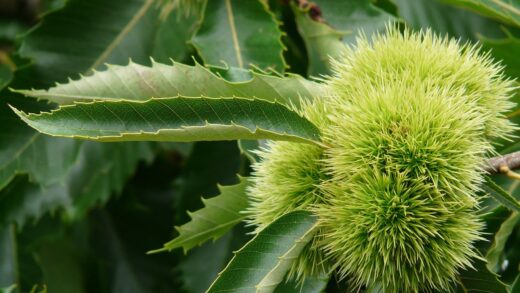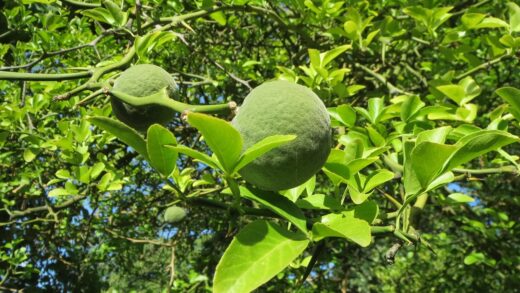Ensuring that quince trees receive adequate and balanced nutrition is a cornerstone of their long-term health, vigor, and ability to produce a bountiful harvest of high-quality fruit. Like all plants, quince require a range of essential mineral nutrients, which they absorb from the soil through their root systems. A well-designed fertilization program aims to supplement the natural nutrient supply in the soil, addressing any deficiencies and providing the tree with the building blocks it needs for all of its metabolic processes. This involves not just applying fertilizer, but doing so thoughtfully, considering the tree’s specific needs at different stages of its growth cycle and the inherent fertility of the soil itself.
The three primary macronutrients that are required in the largest quantities are nitrogen (N), phosphorus (P), and potassium (K). Nitrogen is the engine of vegetative growth, essential for the formation of chlorophyll and proteins, and is responsible for the lush, green foliage that powers photosynthesis. Phosphorus plays a critical role in energy transfer, root development, and the formation of flowers and seeds. Potassium is vital for regulating water movement within the tree, activating enzymes, and enhancing overall hardiness, disease resistance, and fruit quality, including sugar content and storage potential.
Beyond these “big three,” quince trees also depend on a suite of secondary nutrients and micronutrients. Secondary nutrients, such as calcium, magnesium, and sulfur, are needed in moderate amounts and are crucial for cell wall structure, chlorophyll production, and protein synthesis, respectively. The micronutrients, including iron, manganese, zinc, copper, and boron, are required in only trace amounts, but their absence can cause severe physiological disorders. A deficiency in any single one of these essential elements can become a limiting factor, hindering the tree’s growth and productivity even if all other nutrients are abundant.
The most effective approach to quince nutrition is one that is proactive and based on observation and, ideally, on data. Simply applying a generic fertilizer without understanding the soil’s existing nutrient profile or the tree’s specific needs can lead to imbalances, such as an excess of nitrogen, which can stimulate weak, sappy growth at the expense of fruit production. Therefore, a professional fertilization strategy involves assessing the tree’s vigor, observing for any visual symptoms of deficiency, and potentially using soil tests or leaf tissue analysis to gain a precise understanding of what nutrients are needed, allowing for a more targeted and efficient application.
Understanding macronutrient roles
Nitrogen (N) is arguably the most critical nutrient for promoting strong vegetative growth in quince trees. It is a fundamental component of amino acids, which are the building blocks of proteins, and is also central to the chlorophyll molecule, which is essential for photosynthesis. An adequate supply of nitrogen results in vigorous shoot and leaf development, giving the tree a healthy, deep green appearance. However, an excess of nitrogen can be detrimental, leading to overly lush, weak growth that is more susceptible to pests and diseases like fire blight, while also reducing fruit set and delaying fruit maturity.
More articles on this topic
Phosphorus (P) plays a vital, though less visible, role in the overall health and productivity of the quince tree. This nutrient is a key component of ATP (adenosine triphosphate), the molecule that carries energy throughout the plant, fueling all metabolic processes. It is particularly important for the early stages of growth, promoting strong root system development, which is the foundation for a healthy tree. Phosphorus is also essential for flower initiation and development, and a deficiency can result in poor flowering and, consequently, a reduced fruit yield.
Potassium (K), often referred to as the “quality” nutrient, has a wide-ranging impact on the quince tree’s functions. It plays a crucial role in regulating the opening and closing of stomata, which controls water loss, making the tree more resilient to drought stress. Potassium is also known to strengthen cell walls, which can improve the tree’s resistance to certain diseases and pests. For fruit production, it is indispensable for the transport of sugars from the leaves to the fruit, leading to larger, sweeter, and better-quality quince with an improved storage life after harvest.
Achieving the right balance between these three macronutrients is key to successful quince cultivation. A fertilizer that is too high in nitrogen relative to phosphorus and potassium can push the tree into a vegetative state, focusing its energy on producing leaves and shoots instead of flowers and fruit. Therefore, for fruit-bearing trees, it is often recommended to use a balanced fertilizer or one that has a slightly higher proportion of phosphorus and potassium compared to nitrogen. This encourages a healthy equilibrium between vegetative growth and the reproductive processes necessary for a good harvest.
The importance of micronutrients
While required in much smaller quantities than macronutrients, micronutrients are absolutely essential for the healthy growth and development of quince trees, and a deficiency in any one of them can cause significant problems. Iron (Fe), for instance, is a critical component in the synthesis of chlorophyll. An iron deficiency, often occurring in high-pH (alkaline) soils, leads to a distinct condition called iron chlorosis, where the young leaves turn yellow while the veins remain green. This impairs photosynthesis and can severely weaken the tree over time.
More articles on this topic
Boron (B) is another micronutrient that plays a surprisingly large role in the reproductive success of quince. It is vital for pollen viability and germination, as well as for the growth of the pollen tube, which is necessary for successful fertilization and fruit set. A boron deficiency can therefore lead to poor pollination, resulting in a low fruit yield and often causing the fruit that does develop to be deformed or to have corky, dead spots in the flesh. This makes boron management particularly important in regions with soils known to be deficient in this element.
Zinc (Zn) is essential for the synthesis of tryptophan, an amino acid that is a precursor to auxin, a critical plant hormone that regulates growth. A lack of zinc can disrupt normal growth patterns, leading to symptoms such as stunted growth, small, narrow leaves (a condition known as “little leaf”), and a rosetting pattern where the leaves are clustered together due to shortened internodes. This can significantly reduce the tree’s photosynthetic capacity and overall vigor, impacting its ability to produce a healthy crop.
Manganese (Mn) functions as an activator for numerous enzymes involved in photosynthesis and other metabolic pathways. A deficiency in manganese can also cause a type of chlorosis, similar to that of iron or magnesium, where the leaf tissue turns yellow between the veins. However, manganese deficiency typically affects the older, lower leaves as well as new growth. Ensuring adequate levels of all these micronutrients is best achieved by maintaining a healthy soil with plenty of organic matter, which helps to keep them in a form that is available for plant uptake.
Organic vs. synthetic fertilizers
When choosing how to supply nutrients to a quince tree, growers have the option of using either organic or synthetic fertilizers, each with its own set of advantages and characteristics. Organic fertilizers are derived from natural sources, such as compost, aged animal manures, bone meal, blood meal, and fish emulsion. Their primary benefit is that they not only feed the plant but also feed the soil. They release their nutrients slowly as they are broken down by soil microorganisms, which helps to improve soil structure, water retention, and the overall biological health of the soil ecosystem.
The slow-release nature of organic fertilizers means there is less risk of over-fertilizing or “burning” the tree’s roots. They provide a steady, gentle supply of nutrients over a long period, which mimics natural nutrient cycling. Furthermore, organic materials typically contain a wide array of micronutrients in addition to the primary macronutrients, contributing to more balanced plant nutrition. Using materials like compost and mulch also adds valuable organic matter to the soil, which is fundamental for its long-term fertility and health.
Synthetic fertilizers, on the other hand, are manufactured chemical products designed to deliver specific, concentrated doses of nutrients. Their main advantage is that the nutrients are readily available in a water-soluble form that the plant can absorb almost immediately, making them very effective for quickly correcting a diagnosed nutrient deficiency. The nutrient content of synthetic fertilizers is precisely controlled and stated on the packaging (e.g., 10-10-10), which allows for a very targeted application based on the specific needs of the tree or the results of a soil test.
However, synthetic fertilizers do have potential downsides. They do nothing to improve the long-term health or structure of the soil; they only feed the plant directly. Their high solubility can also lead to nutrient leaching, where excess nutrients are washed away by rain or irrigation, potentially contaminating groundwater. There is also a greater risk of misapplication, as applying too much synthetic fertilizer can damage the tree’s roots and disrupt the delicate balance of soil microbes. Many growers find that an integrated approach, using organic matter to build soil health and using synthetic fertilizers sparingly to address specific needs, provides the best of both worlds.
Application methods and timing
The most effective time to apply a general-purpose fertilizer to a quince tree is in the early spring, just as the buds begin to swell and new growth commences. This timing ensures that the essential nutrients are readily available to the tree as it enters its most active period of growth, fueling the development of new leaves, shoots, and flowers. Applying fertilizer at this stage provides the foundation for a healthy and productive season. A granular, slow-release fertilizer is often the best choice for this main application.
The fertilizer should be applied evenly over the entire root zone of the tree, not just at the base of the trunk. A tree’s root system typically extends outwards to at least its drip line—the imaginary circle on the ground directly under the outermost reach of its branches—and often beyond. To apply, broadcast the granular fertilizer evenly over this area, and then gently rake it into the top few inches of soil. Watering the area thoroughly after application is crucial, as this helps to dissolve the granules and carry the nutrients down into the soil where the roots can access them.
Avoid applying nitrogen-rich fertilizers late in the growing season, particularly from late summer onwards. A late-season application of nitrogen can stimulate a new flush of tender growth that does not have sufficient time to harden off before the first frosts of winter arrive. This new growth is highly susceptible to frost damage, which can weaken the tree and create entry points for diseases. The focus in late summer and autumn should be on fruit ripening and the tree’s preparation for dormancy, not on new vegetative growth.
For addressing specific micronutrient deficiencies that may appear during the growing season, a foliar feeding approach can be very effective. This involves dissolving a specialized nutrient product in water and spraying it directly onto the tree’s leaves. The leaves are capable of absorbing small quantities of nutrients, and this method can provide a very rapid correction for a problem like iron or zinc deficiency, often showing visible improvement within a week or two. However, foliar feeding should be seen as a supplemental treatment to correct a specific issue, not a replacement for building healthy, fertile soil.







